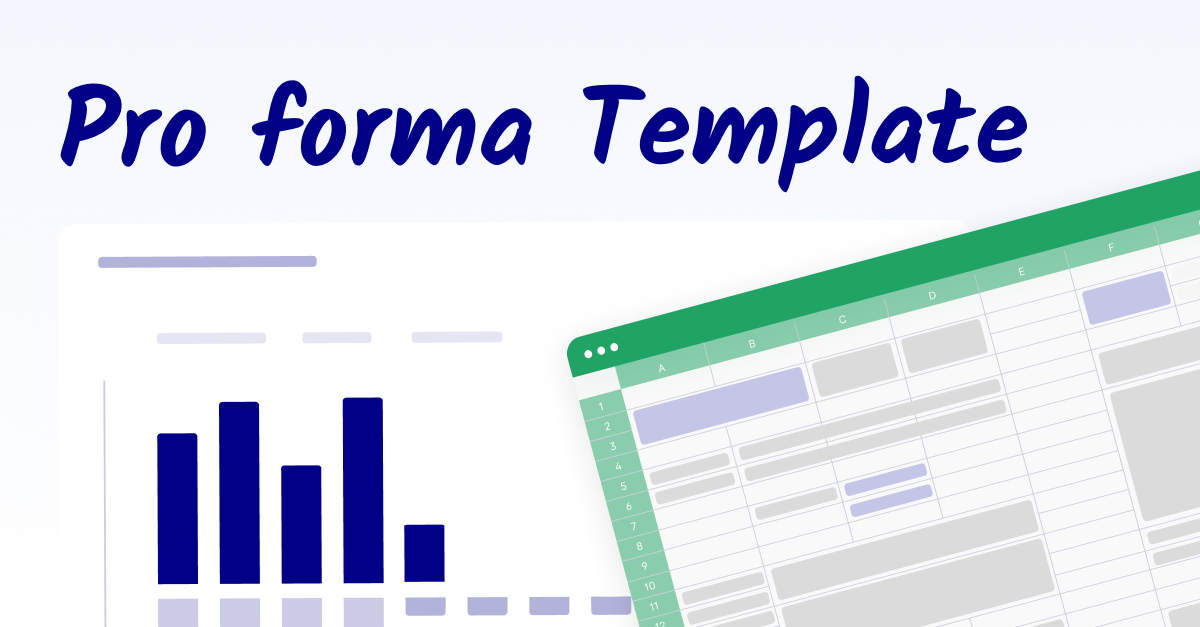What is a contribution margin income statement?
If you’re serious about safeguarding your business’s finances, you need to get into the granular details of your profitability—and that means producing quality contribution margin income statements.
A contribution margin income statement is a document that tallies all of a company’s products and varying contribution margins together, helping leaders understand whether the company is profitable. It’s a useful tool for making decisions on pricing, production, and anything else that could improve profitability.
For instance, Nike has hundreds of different shoe designs, all with different contribution margins. Putting these into a traditional income statement illustrates the bigger picture of which lines are doing better than others, or if any shoes need to be discontinued.

Contribution margin income statements are useful barometers for businesses on whether clear skies are ahead or if they need to hunker down for a storm. It’s also a cornerstone of contribution margin analysis, giving enormous insight into a business’s overall financial position.
What is a contribution margin?
In its simplest form, a contribution margin is the price of a specific product minus the variable costs of producing the item. What’s left is the contribution margin, which gives a sense of how much is left over to cover fixed expenses and make a profit.
This figure helps companies understand how well a product or service is doing financially, and how many units need to be sold to cover the company’s fixed costs and turn a profit. The contribution margin can also help to determine an organization’s break-even point. This is where the revenue is the same as the total costs: the company isn’t making a profit but isn’t losing money either.
In short, the contribution margin is like a safety net. A high contribution margin cushions the fall from unexpected costs and dips in sales. That’s why any business worth its salt will look to improve its margins wherever possible.
Don’t confuse contribution margin and cost of goods sold. COGS only considers direct materials and labor that go into the finished product, whereas contribution margin also considers indirect costs.

What is a contribution format income margin?
A contribution format income margin is a financial metric that reveals the profitability of a product by separating its variable costs from its revenue. The margin is the amount remaining after you subtract variable costs from sales revenue, and that contributes to covering fixed costs and generating profit.
The contribution format income margin is essential for understanding the financial performance of individual products or services and is used to make informed decisions about pricing, production, and cost management.
Example of a contribution margin income statement
Contribution margin income statements aren’t rocket science, so let's take a look at a standard example statement based on a beauty company.
|
Item
|
Amount
|
|
Revenue
|
$100,000
|
|
Variable costs
|
$50,000
|
|
Contribution margin
|
$50,000
|
|
Fixed expenses
|
$25,000
|
|
Net profit
|
$25,000
|
In this example, the beauty company generates $100,000 in revenue. The variable costs (raw materials, packaging, commissions) total $50,000, leaving a contribution margin of $50,000. After covering fixed expenses (rent, salaries), the net profit is $25,000. This detailed breakdown helps in understanding the financial performance of individual products or services.
How to determine the contribution margin
The formula for determining the contribution margin is:
Contribution margin = sales revenue − variable costs
To work out the contribution margin, you need to understand the difference between an item’s fixed and variable expenses.
Fixed costs
These costs don’t fluctuate with the level of production or sales an item makes—which is why they're sometimes called fixed production costs. No matter how much a company sells, the office rent still needs to be paid—so this is a fixed cost.
Some other examples of fixed costs are equipment and machinery, salaries that aren’t directly related to the product's manufacturing, and fixed administrative costs.
Variable costs
Variable costs are not consistent and are directly related to the product’s manufacture or sales. They tend to increase as a company scales products and decrease with production.
Some common examples of variable costs are raw materials, packaging, and the labor cost of making the product. Importantly, the contribution margin also includes indirect costs. Some great examples of these are sales commissions or referral fees.
You don’t need to spend this money to create the product, but it is still included in the cost of making a sale.
Although variable costs are more difficult to track, they are absolutely essential in predicting the true profitability of products such as electric vehicles, despite reductions in fixed costs.
To get the contribution margin, you subtract these costs from the product's revenue.

Example of how to find the contribution margin
As we know, the contribution margin is the money left over from the revenue after you’ve taken away all the costs associated with making the product, also known as the variable production costs.
Here’s the formula in its simplest terms:
Revenue - variable costs = contribution margin
Let’s say that our beauty conglomerate sells 1,000 units of its bestselling skincare products for $50 each, totaling $50,000 in revenue.
Looking at the variable expenses, each skincare product needs ingredients to be formulated, some nice packaging, and a good salesperson on commission.
These total $28 per product.
To calculate total variable costs, we multiply this by our 1,000 units and get $28,000.
If we subtract the variable costs from the revenue, we’re left with a $22,000 contribution margin.
Because this figure is usually expressed as a percentage, we’d then divide the contribution margin by the revenue to get the ratio of 0.44.
Converted into a percentage, this leaves the beauty company with a 44% contribution margin on its skincare product.
Getting this calculation right can be time-consuming and relies on consistent reporting for fixed and variable earnings. A lot of companies use financial statement software to remove the headache.
How to fill out a contribution margin income statement
Putting together a contribution margin income statement boils down to a few simple steps:
- Work out the total revenue for the time period you need, like a month or quarter.
- Look at all of the variable costs for that period.
- Calculate the contribution margin by subtracting the variable costs from the revenue.
- Determine all of the fixed costs for the same period.
- Subtract all of the fixed costs from the contribution margin. What you’re left with is the net profit for that period.
Going back to that beauty company example from earlier, we’ll assume the business has expanded into the high-end skincare market and wants to see how the new line is performing financially.
Let’s fill out a hypothetical contribution margin income statement for them:
|
Item
|
Income
|
Expenses
|
Total
|
|
Revenue
|
$100,000
|
|
|
|
Variable costs
|
|
$50,000
|
|
|
CONTRIBUTION MARGIN TOTAL
|
|
|
$50,000
|
|
Fixed expenses
|
|
$25,000
|
|
|
NET PROFIT TOTAL
|
|
|
$25,000
|
This leaves the beauty company with a 50% contribution margin for its new skincare line.
It’s important to note this is a very simplified look at a contribution margin income statement format.
An income statement would have a much more detailed breakdown of the variable and fixed expenses.
Specialist software and tools can help to ensure the breakdown is as accurate and complete as possible.

Contribution income statement vs. traditional income statements
A contribution income statement focuses on separating variable costs from fixed costs, highlighting the contribution margin (sales revenue minus variable costs). This format aids internal decision-making regarding pricing, production, and profitability.
In contrast, a traditional income statement, also known as a multi-step income statement, categorizes expenses into operating and non-operating sections, calculating gross profit (revenue minus cost of goods sold), operating income (gross profit minus operating expenses), and net income (operating income plus non-operating items). It is primarily used for external financial reporting, providing a comprehensive overview of a company’s financial performance.
Is the contribution margin the same as income?
No, contribution margin and income are two different metrics.
While the contribution margin shows the money left over for paying fixed expenses and profit, income is the total of a company’s revenue, other investments, and losses. It’s also known as net profit or net income. Both do similar things but from different viewpoints.
A contribution margin is a narrow view of a product or service’s profitability, but the net profit is a much wider and more comprehensive look at a company’s financial performance.
Need some context? The contribution margin provides the profitability of each individual dish at a restaurant, whereas income would look at the entire restaurant’s overall financial health.
Contribution margin vs. EBIT and EBITDA
You might have been thinking that the contribution margin sounds like EBIT or EBITDA, but they're actually pretty different.
Let's run through some common questions about how they relate to each other.

Is the contribution margin the same as EBIT?
A contribution margin is a gap between the revenue of a product and the variable costs it took to make it. Earnings Before Interest and Taxes (EBIT) is the company’s net income before applying taxes and interest rates.
While contribution margin looks at the profitability ratio of each product or service a company makes individually based on the variable costs, EBIT is a measure of profitability for the entire company as a whole and also takes fixed costs into account.
Is EBIT in the income statement?
EBIT features in a company income statement as it gives the operating figures of a business more context.
However, EBIT isn’t in a contribution margin income statement.
Contribution margins are helpful in determining a product’s performance but don’t include the fixed costs for the whole business as EBIT does.
Here’s the formula for working out EBIT:
Revenue - (variable + fixed expenses) = EBIT
The EBIT formula looks at the total cost of fixed and variable components. This would make the beauty company’s EBIT calculation $100,000 - ($50,000 + $25,000) = $25,000.
How do you calculate the contribution margin from EBIT?
You can’t directly calculate the contribution margin from the EBIT figure, without a breakdown of the fixed and variable costs for each product or service.
EBIT provides an overall view of the company's profitability level, whereas contribution margin looks at the profitability of each individual service or product.
As shown in the formula above, the formula for EBIT involves taking company sales revenue, and expenses, without breaking this down into individual products or services.
To calculate the contribution margin, you need more detailed financial data to calculate EBIT.

What does EBITDA mean on an income statement?
Earnings Before Interest, Taxes, Depreciation, and Amortization (EBITDA) measures a company’s financial health. EBITDA focuses on operating expenses and removes the effects of financing, accounting, and tax decisions.
If the contribution margin is a cousin to EBIT, then EBITDA is the older sibling. It takes financial performance metrics further by adding depreciation and amortization expenses to the EBIT figure.
Taxes and other company expenses can obscure how well a company’s products or services perform. This makes the EBITDA figure important for investors looking to put money into a business.
If you’ve already got the EBIT figure, then EBITDA follows this formula:
EBIT + Depreciation + Amortization
How do you calculate EBIT and EBITDA on an income statement?
EBIT and EBITDA are simple enough to add to the income statement.
Let’s revisit the beauty company’s income statement from before and add in EBIT and EBITDA:
|
Item
|
Income
|
Expenses
|
Total
|
|
Revenue
|
$100,000
|
|
|
|
Variable costs
|
|
$50,000
|
|
|
Fixed expenses
|
|
$25,000
|
|
|
EBITDA TOTAL
|
$100,000
|
$75,000
|
$25,000
|
|
Depreciation
|
|
$5,000
|
|
|
Amortization
|
|
$5,000
|
|
|
EBIT TOTAL
|
$100,000
|
$85,000
|
$15,000
|
This gives a much more detailed financial picture of the business’s operating costs and how well the products perform. Depending on the type of business, either EBIT or EBITDA can be a better measure of the company's profitability.
You’ll notice that the above statement doesn’t include the contribution margin. That’s because a contribution margin statement is generally done separately from the overall company income statement.
The financial data used to create these have a lot of crossovers, but they look at different aspects of a business.
Contribution margin and regular income statements can be very detailed, requiring an in-depth understanding of the business’s inner workings.
FP&A software makes the process much simpler as it can run the calculations automatically.
The bottom line on contribution margin income statements
Now you know all about the contribution margin income statement, how it differs from the traditional income statement, and how to make one. However, knowledge isn’t quite enough if you’ve got reports to create and stakeholders to reassure on top of your day-to-day tasks.
For that, you’ll need a tool that automates data collection, accurately calculates financial insights, and produces customizable reports. Request a free demo and see how Cube can help you save time with all your contribution margin income statements, reports, analysis, and planning.



.png)









.png)

![Contribution margin income statements: a complete guide [2025]](https://www.cubesoftware.com/hubfs/contribution%20margin%20income%20statement%20(1).png)


.png)
.png)
